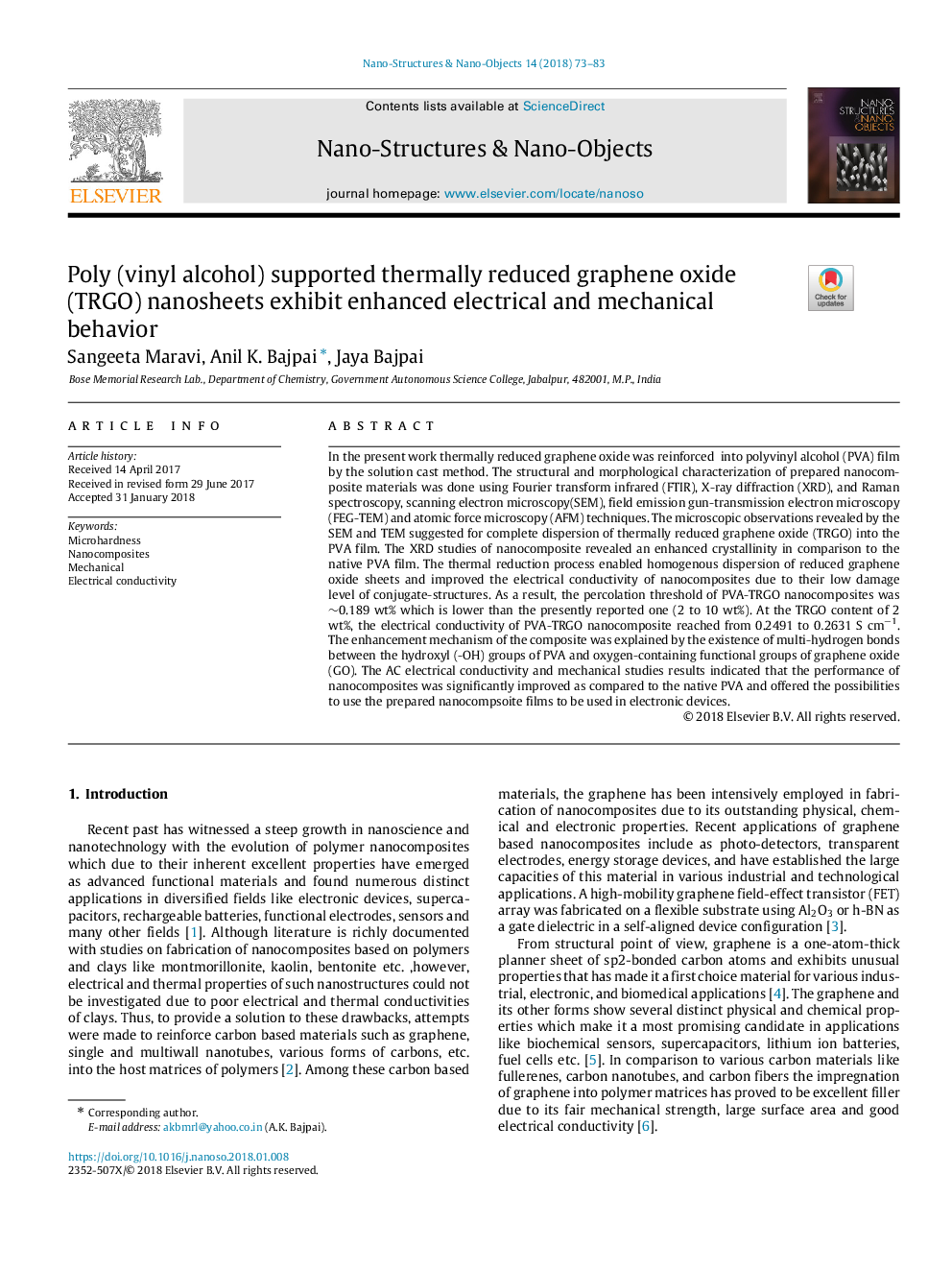| Article ID | Journal | Published Year | Pages | File Type |
|---|---|---|---|---|
| 7761871 | Nano-Structures & Nano-Objects | 2018 | 11 Pages |
Abstract
In the present work thermally reduced graphene oxide was reinforced into polyvinyl alcohol (PVA) film by the solution cast method. The structural and morphological characterization of prepared nanocomposite materials was done using Fourier transform infrared (FTIR), X-ray diffraction (XRD), and Raman spectroscopy, scanning electron microscopy(SEM), field emission gun-transmission electron microscopy (FEG-TEM) and atomic force microscopy (AFM) techniques. The microscopic observations revealed by the SEM and TEM suggested for complete dispersion of thermally reduced graphene oxide (TRGO) into the PVA film. The XRD studies of nanocomposite revealed an enhanced crystallinity in comparison to the native PVA film. The thermal reduction process enabled homogenous dispersion of reduced graphene oxide sheets and improved the electrical conductivity of nanocomposites due to their low damage level of conjugate-structures. As a result, the percolation threshold of PVA-TRGO nanocomposites was â¼0.189Â wt% which is lower than the presently reported one (2 to 10 wt%). At the TRGO content of 2 wt%, the electrical conductivity of PVA-TRGO nanocomposite reached from 0.2491 to 0.2631Scmâ1. The enhancement mechanism of the composite was explained by the existence of multi-hydrogen bonds between the hydroxyl (-OH) groups of PVA and oxygen-containing functional groups of graphene oxide (GO). The AC electrical conductivity and mechanical studies results indicated that the performance of nanocomposites was significantly improved as compared to the native PVA and offered the possibilities to use the prepared nanocompsoite films to be used in electronic devices.
Related Topics
Physical Sciences and Engineering
Chemistry
Inorganic Chemistry
Authors
Sangeeta Maravi, Anil K. Bajpai, Jaya Bajpai,
